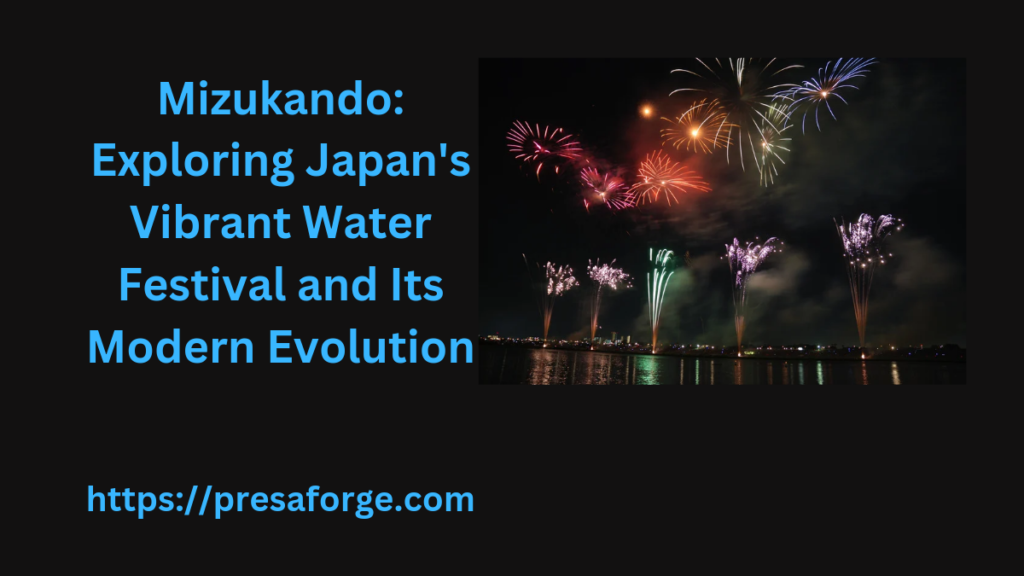Introduction to Mizukando
Mizukando is a remarkable cultural phenomena that has attracted many with its combination of tradition and contemporary. Originating in Japan, It is more than simply a traditional activity; it is a vibrant expression of creativity, spirituality, and community. In this post, we will dig into the nuances of it, its historical origins, relevance, and the influence it continues to have on current society.
The Origins of Mizukando
Historical Background
It, whose name translates approximately to “water festival” in English, has its roots in ancient Japanese festivals and rituals. Historically, these rites were intricately connected with agricultural practices and seasonal shifts, highlighting the significance of water in maintaining life and crops.
Cultural Significance
In its early incarnations, It was celebrated to worship water deities and to request blessings for plentiful harvests. The rites sometimes comprised elaborate processions, music, dancing, and gifts offered to water spirits. These traditions show the strong regard for nature that is distinctive of Japanese spirituality.
Traditional Practices of Mizukando
Rituals and Ceremonies
Traditional Mizukando festivities are noted by their bright and immersive rituals. Participants dress in traditional clothing, participate in coordinated dance performances, and carry symbolic things through the streets. These rituals are not only ceremonial but are loaded with cultural importance, seeking to develop a feeling of oneness and social peace.
Music and Dance
A significant part of Mizukando is its music and dancing. The rhythmic rhythms of traditional drums and the lyrical melodies of flutes create an aura of celebration and devotion. Dance acts, sometimes done in groups, represent the historical and spiritual aspects linked with the event. These performances are both a respect to past rituals and a celebration of the current time.
Mizukando in Contemporary Japan
Modern Adaptations
In current times, It has grown to embrace new aspects while preserving its traditional core. Festivals now draw travelers from across the globe, mixing traditional rituals with contemporary entertainment. This modification has helped retain Mizukando’s relevance in an increasingly international society.
Cultural Preservation Efforts
Organizations and local communities have been helpful in maintaining Mizukando’s traditional elements. By sponsoring educational programs, seminars, and festivals, they guarantee that younger generations stay linked to their cultural legacy. This work is vital in ensuring the authenticity and continuity of Mizukando practices.
Impact on Local Communities
Community Engagement
It serves as a key communal event, building social togetherness and a feeling of identity. The event brings together people from varied backgrounds, emphasizing mutual tolerance and cooperation. Local businesses also profit from the increased tourist and community involvement produced by the event.
Economic Implications
The economic influence of Mizukando goes beyond the local location of the event. It boosts local economies via tourism, goods sales, and hospitality services. This economic boost helps support local craftsmen, entertainers, and businesses, providing a beneficial ripple effect across the neighborhood.
The Future of Mizukando
Challenges and Opportunities
As It continues to adapt to contemporary times, it confronts both obstacles and possibilities. Balancing heritage with new developments is vital for retaining its cultural integrity. Additionally, the rising impact of global tourism poses both a challenge and a chance to strengthen the festival’s worldwide appeal while keeping its essential principles.
Prospects for Global Recognition
Mizukando’s unique combination of heritage and contemporary has the potential to earn worldwide attention. By stimulating cultural interaction and cultivating worldwide interest, Mizukando may obtain a bigger audience while continuing to appreciate its rich legacy.
Conclusion
Mizukando is more than simply a festival; it is a living tribute to Japan’s rich cultural fabric. Through its ancient ceremonies, contemporary modifications, and communal influence, It continues to flourish as a symbol of togetherness, respect, and joy. As it progresses ahead, the balance between keeping its ancient origins and incorporating modern features will determine its future, ensuring that its remains a valued cultural phenomenon for years to come.
FAQs
1.What is Mizukando?
It is a traditional Japanese festival commemorating water deities via rituals, music, and dancing. It underscores the cultural relevance of water in maintaining life and agriculture.
2.Where did Mizukando originate?
Mizukando began in Japan and has historical origins in ancient rites and agricultural methods.
3.How has Mizukando changed throughout time?
Mizukando has expanded to incorporate contemporary aspects while keeping its ancient rituals, drawing both locals and foreign visitors.
4.What function does Mizukando play in local communities?
Mizukando supports community participation, social cohesion, and economic advantages via tourism and local business assistance.
5.What are the future possibilities for Mizukando?
Mizukando has the problem of blending heritage with new trends while pursuing worldwide recognition and keeping its cultural integrity.

